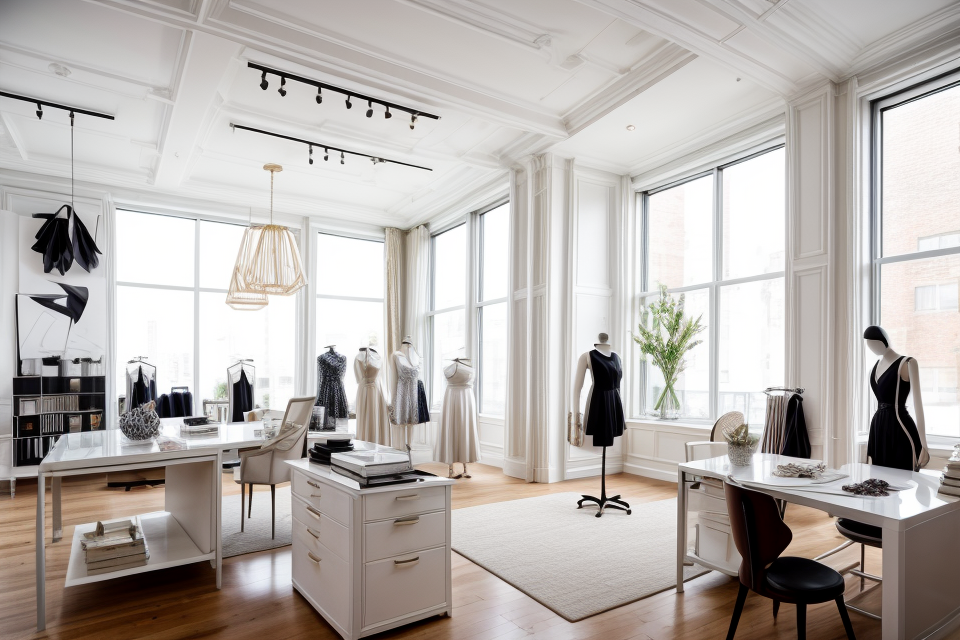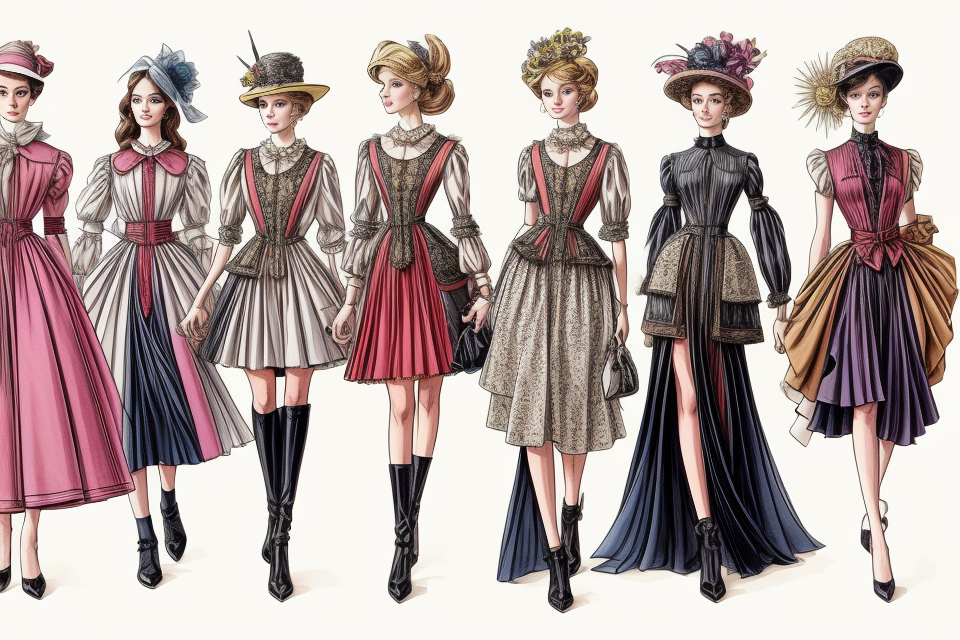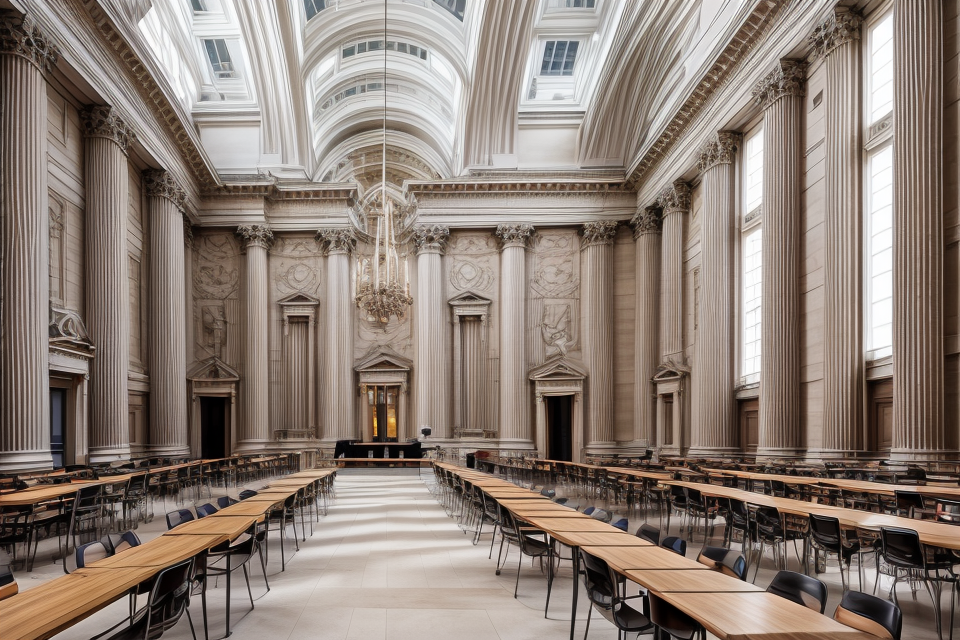
The world of fashion is an ever-evolving and exciting landscape, with new trends and styles emerging every season. But what lies behind the scenes of this glamorous industry? Who is the mastermind behind the latest runway show, the couture gown, or the streetwear staple? Enter the professional fashion designer.
In this article, we’ll delve into the world of professional fashion design, uncovering the secrets that set these talented individuals apart from the rest. From their unique skill set to their passion for creativity, we’ll explore what it takes to become a successful fashion designer and the impact they have on the industry.
Whether you’re a fashion enthusiast or simply curious about the inner workings of the fashion world, this article will give you a behind-the-scenes look at the world of professional fashion design and the people who make it happen. So sit back, relax, and get ready to uncover the secrets of a professional fashion designer.
The Definition of a Professional Fashion Designer
Qualifications and Education
A professional fashion designer is someone who has obtained the necessary qualifications and education to work in the fashion industry. In order to become a professional fashion designer, one must have a strong passion for fashion and a desire to pursue a career in this field. This passion and desire must be supported by the right education and qualifications.
The first step towards becoming a professional fashion designer is to obtain a Bachelor’s or Master’s degree in Fashion Design. This degree program provides students with a comprehensive understanding of the fashion industry, including design principles, fabric selection, garment construction, and market trends. Students also learn how to use design software and techniques to create and present their designs.
In addition to formal education, a professional fashion designer must have knowledge of design software and techniques. These skills are essential for creating and presenting designs to clients, manufacturers, and other industry professionals. Knowledge of pattern-making, grading, and fitting is also important, as these skills are necessary for creating well-fitting garments.
Experience in the fashion industry is also a critical aspect of becoming a professional fashion designer. This experience can be gained through internships, apprenticeships, or by working in entry-level positions within the industry. Experience allows designers to gain a deeper understanding of the industry, develop their skills, and build relationships with other professionals.
Overall, becoming a professional fashion designer requires a combination of education, skills, and experience. A designer must have a strong passion for fashion, the right education and qualifications, and the ability to apply their knowledge and skills in the real world. With hard work and dedication, anyone can become a successful professional fashion designer.
Skills and Abilities
Creativity and Originality
A professional fashion designer is expected to have a high level of creativity and originality. This involves being able to come up with unique and innovative ideas for clothing and accessories that can appeal to a particular target market. Fashion designers must be able to think outside the box and be able to translate their creative vision into reality through sketches, mood boards, and prototypes.
Attention to Detail
Fashion designers must have a keen eye for detail, as even the smallest mistakes can affect the overall quality of a garment. They must be able to inspect fabrics, seams, and finishes to ensure that everything is up to standard. This attention to detail is also crucial when it comes to choosing materials, selecting patterns, and creating designs that are not only visually appealing but also functional and comfortable to wear.
Business and Marketing Skills
A professional fashion designer must have a good understanding of the business side of the industry. This includes knowledge of market trends, consumer behavior, and the competitive landscape. Fashion designers must be able to market their products effectively, create collections that meet the needs of their target market, and manage their finances and budgets.
Leadership and Teamwork Abilities
Fashion designers often work in teams, collaborating with other designers, pattern makers, cutters, and production managers. Therefore, they must have strong leadership and teamwork skills to ensure that everyone is working towards the same goal. Fashion designers must be able to communicate effectively, delegate tasks, and motivate their team to achieve the best possible results. They must also be able to work under pressure and meet tight deadlines while maintaining a high level of quality and attention to detail.
The Responsibilities of a Professional Fashion Designer
Design and Production
Conceptualizing and Creating Designs
As a professional fashion designer, one of the primary responsibilities is to conceptualize and create designs that are not only aesthetically pleasing but also functional and wearable. This involves having a deep understanding of the latest fashion trends, as well as an appreciation for timeless style.
Designers must also have a keen eye for detail and be able to envision how different fabrics, colors, and textures will work together to create a cohesive look. Additionally, they must be able to translate their designs into sketches and illustrations that accurately convey their vision.
Developing Sketches and Prototypes
Once a designer has conceptualized their design, the next step is to develop sketches and prototypes. This involves creating multiple variations of the design and making any necessary adjustments before moving forward with production.
Designers must be able to communicate their ideas through sketches and prototypes that accurately represent their vision. They must also be able to work with a team of pattern makers, seamstresses, and other professionals to ensure that the final product meets their standards.
Selecting Fabrics and Materials
Another important aspect of design and production is selecting the right fabrics and materials for each design. This involves a deep understanding of different types of fabrics, their properties, and how they will perform in different environments.
Designers must also consider the cost and availability of different materials, as well as their sustainability and ethical impact. This requires a balance between creativity and practicality, as well as a commitment to sustainability and ethical practices.
Overseeing Production and Manufacturing
Finally, professional fashion designers are responsible for overseeing the production and manufacturing of their designs. This involves working with factories and other manufacturers to ensure that the final product meets their standards for quality and craftsmanship.
Designers must also manage the production process, including scheduling, budgeting, and communication with suppliers and manufacturers. This requires strong organizational skills and a commitment to efficiency and effectiveness.
Overall, the responsibilities of a professional fashion designer are multifaceted and require a combination of creativity, technical skills, and business acumen. Successful designers must be able to navigate the complex world of fashion, balancing artistic vision with practical considerations and business goals.
Marketing and Sales
As a professional fashion designer, marketing and sales play a crucial role in the success of their career. A designer must be able to build and maintain a strong brand image, which involves creating a unique and recognizable identity that sets them apart from the competition. This includes developing a signature style, using a consistent color palette, and selecting the right materials for their designs.
Participating in fashion shows and events is also an essential aspect of marketing and sales for a professional fashion designer. These events provide an opportunity to showcase their designs to a wider audience, network with industry professionals, and gain exposure for their brand. Attending trade shows, fashion weeks, and other industry events can help designers to build relationships with retailers, buyers, and media professionals, which can lead to increased sales and coverage for their brand.
Networking with retailers and buyers is also an important aspect of marketing and sales for a professional fashion designer. Building relationships with these industry professionals can lead to increased sales and exposure for their brand. This involves attending networking events, participating in industry organizations, and building relationships with retailers and buyers who are interested in their designs.
Managing sales and marketing campaigns is also an essential aspect of marketing and sales for a professional fashion designer. This involves developing and implementing effective marketing strategies to promote their brand and designs, such as creating a website, social media presence, and email marketing campaigns. A designer must also be able to manage their sales channels, including wholesale and retail sales, and build relationships with distributors and retailers to increase their brand’s reach and sales.
Business and Management
Managing budgets and finances
One of the most important responsibilities of a professional fashion designer is managing budgets and finances. This includes creating and sticking to a budget for each collection or project, as well as making financial decisions such as deciding which fabrics to use and how much to charge for their designs. Designers must also be aware of the financial implications of their decisions, such as the cost of production and marketing, and how these costs will affect the overall profitability of their brand.
Hiring and supervising staff
Another important aspect of business and management for a professional fashion designer is hiring and supervising staff. This includes finding and hiring skilled workers such as pattern makers, cutters, and seamstresses, as well as overseeing their work to ensure that it meets the high standards of the designer’s brand. Designers must also be able to delegate tasks effectively and motivate their team to achieve the best possible results.
Negotiating contracts and agreements
Professional fashion designers must also be skilled negotiators when it comes to contracts and agreements. This includes negotiating with suppliers for the best prices on materials, as well as negotiating with manufacturers and retailers to secure distribution deals. Designers must also be able to draft and negotiate contracts with clients, models, and other partners in the industry.
Keeping up with industry trends and developments
Finally, professional fashion designers must stay up-to-date with the latest industry trends and developments. This includes attending fashion shows and events, reading fashion magazines and blogs, and networking with other designers and industry professionals. By staying informed about the latest trends and developments, designers can create collections that are relevant and appealing to their target market, and stay ahead of the competition.
The Challenges of Being a Professional Fashion Designer
Balancing Creativity and Business
Striking a balance between artistic expression and financial success
Being a professional fashion designer requires striking a delicate balance between artistic expression and financial success. This means that designers must create unique and creative pieces while also considering the marketability and profitability of their designs. This can be a challenging task, as designers must stay true to their artistic vision while also appealing to consumers and retailers.
Navigating the competitive and fast-paced nature of the fashion industry
The fashion industry is highly competitive and fast-paced, and professional fashion designers must navigate this environment with skill and strategy. This means staying up-to-date with the latest trends and technologies, constantly adapting to changing consumer preferences, and developing strong business acumen to succeed in a crowded marketplace.
Adapting to changing trends and consumer preferences
In addition to navigating the competitive landscape of the fashion industry, professional fashion designers must also adapt to changing trends and consumer preferences. This requires a deep understanding of market research, consumer behavior, and fashion forecasting, as well as the ability to anticipate and respond to shifts in the marketplace. By staying ahead of the curve and remaining flexible, designers can ensure that their work remains relevant and in demand.
Building and Maintaining a Brand
Establishing a unique and recognizable identity is crucial for any fashion designer looking to make a name for themselves in the industry. A strong brand image can set a designer apart from their competitors and help them build a loyal customer base. However, maintaining this brand image is not a one-time task, but rather an ongoing process that requires continuous innovation and evolution.
One of the key challenges of building and maintaining a brand as a fashion designer is ensuring consistency across all platforms and products. This means creating a cohesive visual identity that is reflected in everything from the designer’s website and social media accounts to their product packaging and advertising campaigns. Consistency is essential for creating a strong brand image and helping customers recognize and remember a designer’s unique style.
Another challenge is continuously innovating and evolving to stay relevant in an ever-changing fashion industry. Fashion trends come and go quickly, and a designer who fails to keep up with the latest styles and trends risks becoming irrelevant and losing their customer base. This requires a constant focus on research and development, as well as a willingness to take risks and try new things.
Overall, building and maintaining a brand as a fashion designer requires a lot of hard work and dedication. It is not just about creating beautiful clothes, but also about establishing a unique identity and building a loyal customer base. By consistently innovating and evolving, a designer can set themselves apart from the competition and build a long-lasting and successful career in the fashion industry.
Overcoming Obstacles and Setbacks
Designing and creating new fashion pieces is a challenging process that requires creativity, technical skills, and a lot of hard work. Fashion designers face various obstacles and setbacks in their journey to success. Here are some of the challenges they face and how they overcome them.
- Dealing with criticism and rejection
Criticism and rejection are a part of the fashion industry. Fashion designers have to present their designs to critics, buyers, and clients who may not always appreciate their work. However, successful fashion designers have learned to use criticism as a learning experience. They take the feedback they receive seriously and use it to improve their designs.
- Overcoming creative blocks and setbacks
Creative blocks and setbacks are a common challenge for fashion designers. Sometimes, a designer may hit a wall and not know how to move forward with their work. However, successful designers have learned to overcome these obstacles by taking breaks, trying new techniques, and seeking inspiration from other sources.
- Handling stress and burnout
The fashion industry is a fast-paced and demanding field that can be stressful and overwhelming. Fashion designers work long hours, meet tight deadlines, and deal with high-pressure situations. To avoid burnout, successful designers have learned to prioritize their mental and physical health. They take time off to recharge, exercise, and practice self-care.
In conclusion, fashion designers face various obstacles and setbacks in their journey to success. However, by learning to overcome these challenges, they are able to create stunning and innovative designs that push the boundaries of fashion.
FAQs
1. What is a professional fashion designer?
A professional fashion designer is someone who has the skills, training, and experience to design clothing and accessories for various clients or brands. They possess a deep understanding of the fashion industry, trends, fabrics, textiles, and the design process.
2. What kind of education do professional fashion designers have?
Professional fashion designers typically have a bachelor’s or master’s degree in fashion design, fashion merchandising, or a related field. Some have pursued degrees in fine arts, architecture, or even business. The education focuses on developing skills in design, sketching, pattern making, draping, and garment construction.
3. What skills should a professional fashion designer possess?
A professional fashion designer should have strong artistic and creative skills, including drawing, sketching, and rendering designs. They should also have knowledge of fabric, textiles, and garment construction, as well as an understanding of market trends and consumer preferences. Communication, collaboration, and time management skills are also crucial for success in the industry.
4. What does a typical day look like for a professional fashion designer?
A typical day for a professional fashion designer may involve meetings with clients, designing and sketching new collections, selecting fabrics and materials, attending fashion shows and events, collaborating with other designers or manufacturers, and managing deadlines and production schedules.
5. How does a professional fashion designer stay up-to-date with industry trends?
Professional fashion designers stay up-to-date with industry trends by attending fashion shows, reading fashion magazines and blogs, participating in design events and competitions, engaging with industry professionals on social media, and following key influencers and designers. They also regularly visit fabric and trims markets to explore new materials and inspiration.
6. What is the difference between a professional fashion designer and an amateur designer?
The main difference between a professional fashion designer and an amateur designer lies in their level of training, experience, and industry connections. Professional fashion designers have honed their skills through education and practical experience, and they understand the business side of the industry, including production, marketing, and sales. They also have a network of industry contacts and resources to support their work.
7. What challenges do professional fashion designers face?
Professional fashion designers face a range of challenges, including managing tight deadlines, working within budget constraints, navigating the fast-paced and competitive nature of the industry, and keeping up with constantly changing trends and consumer preferences. They must also balance their creative vision with the practicalities of production and marketing.
8. What is the job outlook for professional fashion designers?
The job outlook for professional fashion designers is variable, as it depends on factors such as economic conditions, consumer spending, and industry trends. However, the demand for skilled fashion designers remains strong, with opportunities available in various sectors, including haute couture, mass-market retail, and sportswear. With dedication and hard work, a professional fashion designer can build a successful career in this dynamic and exciting field.


